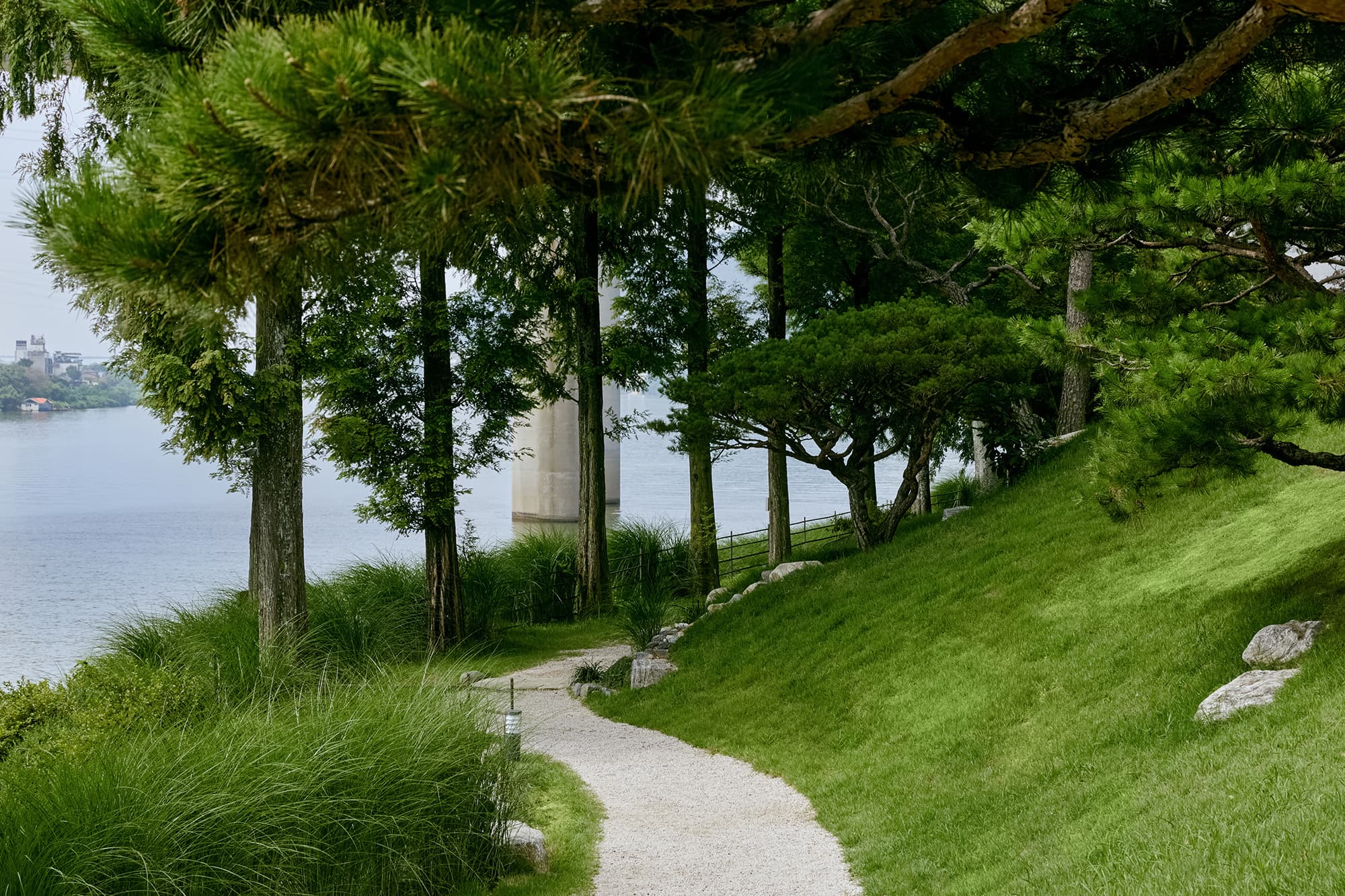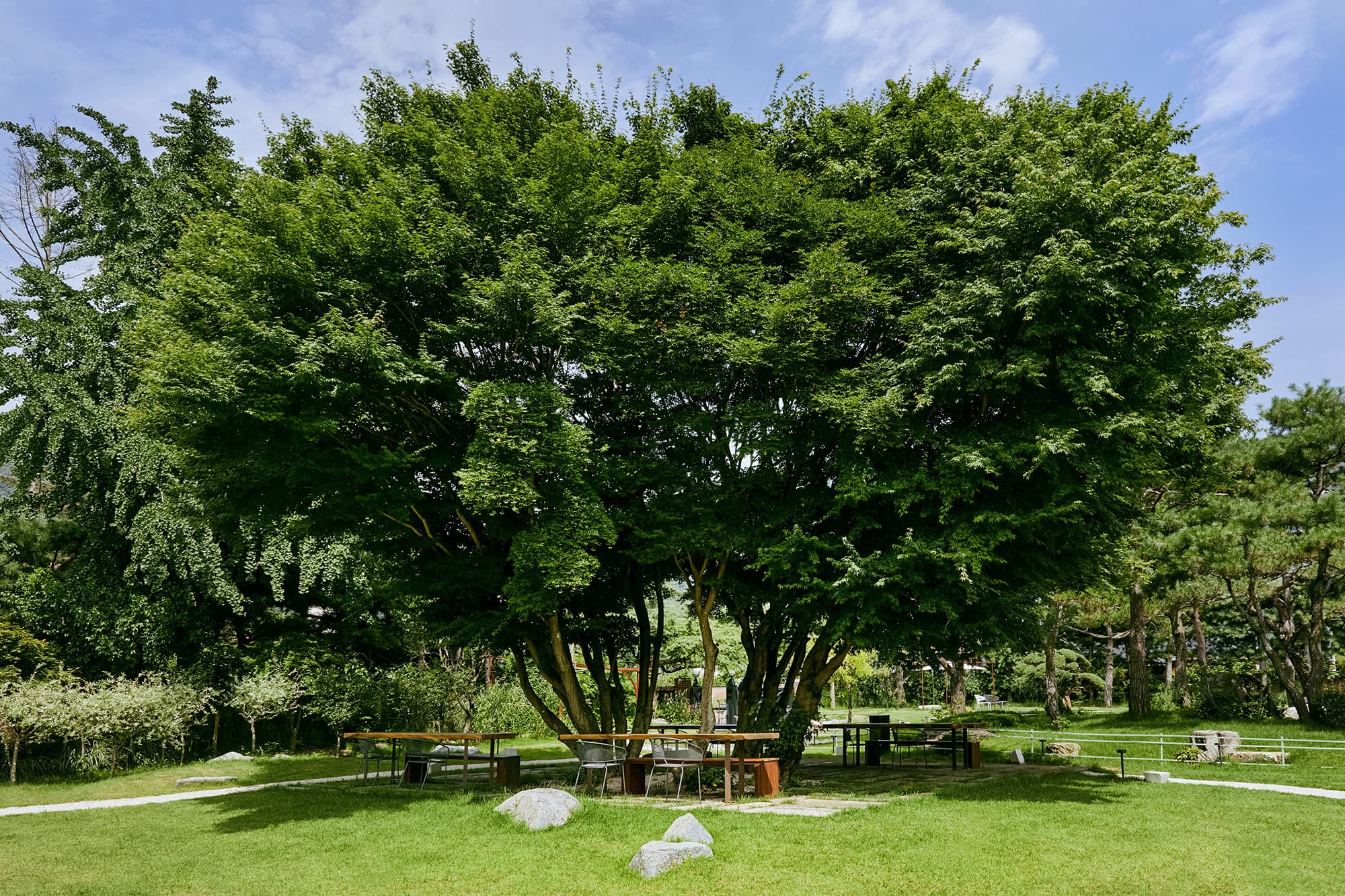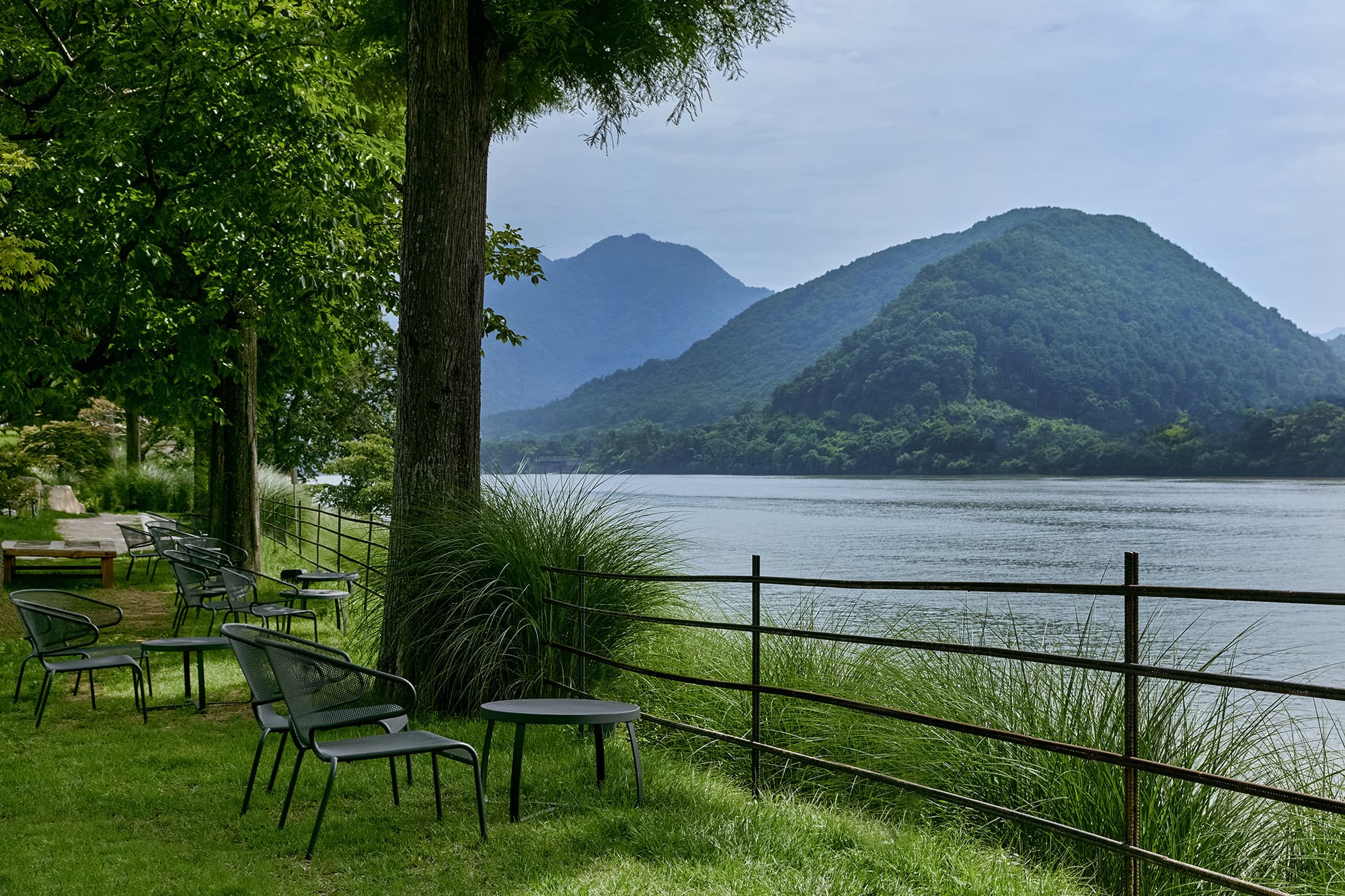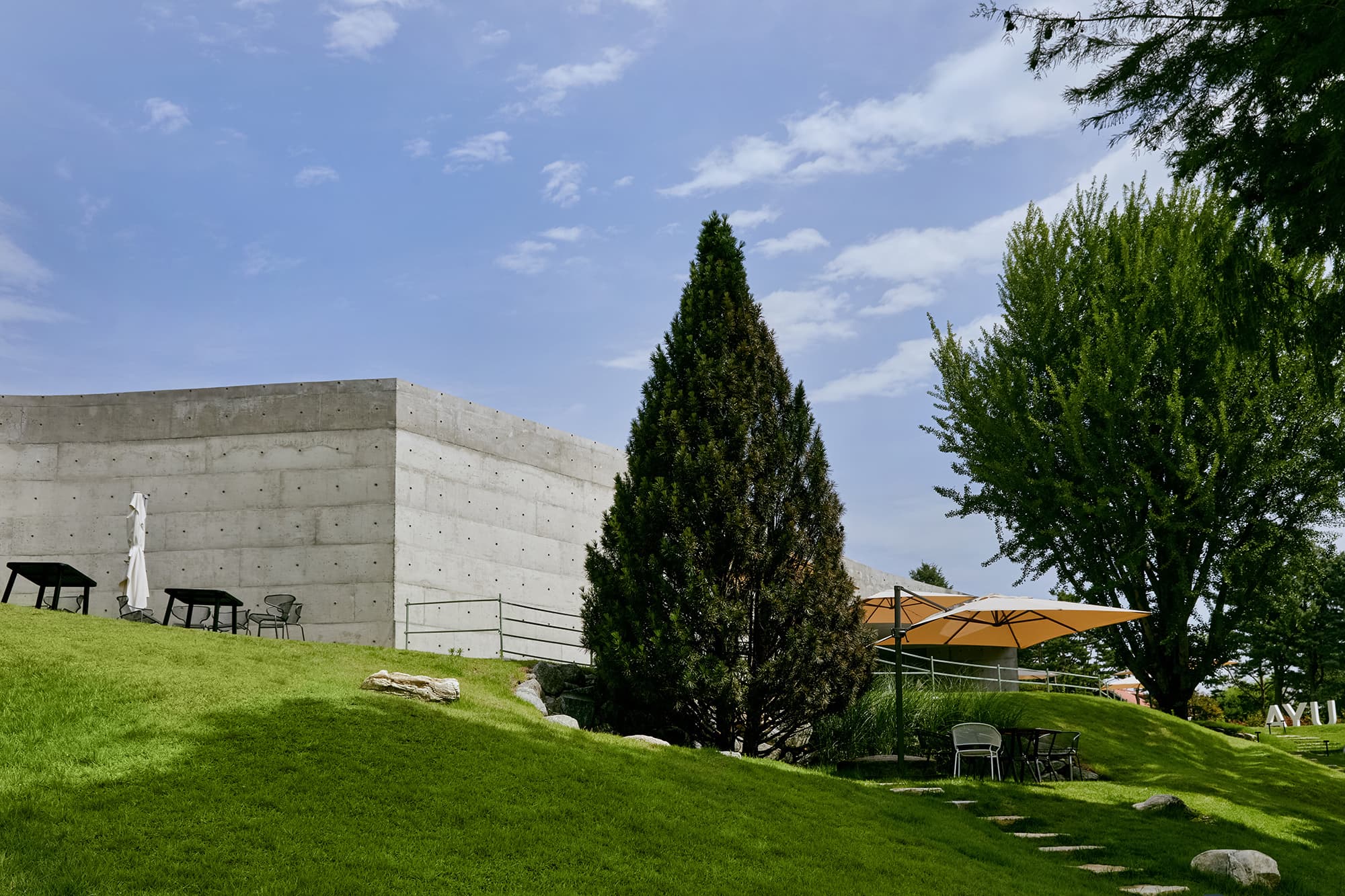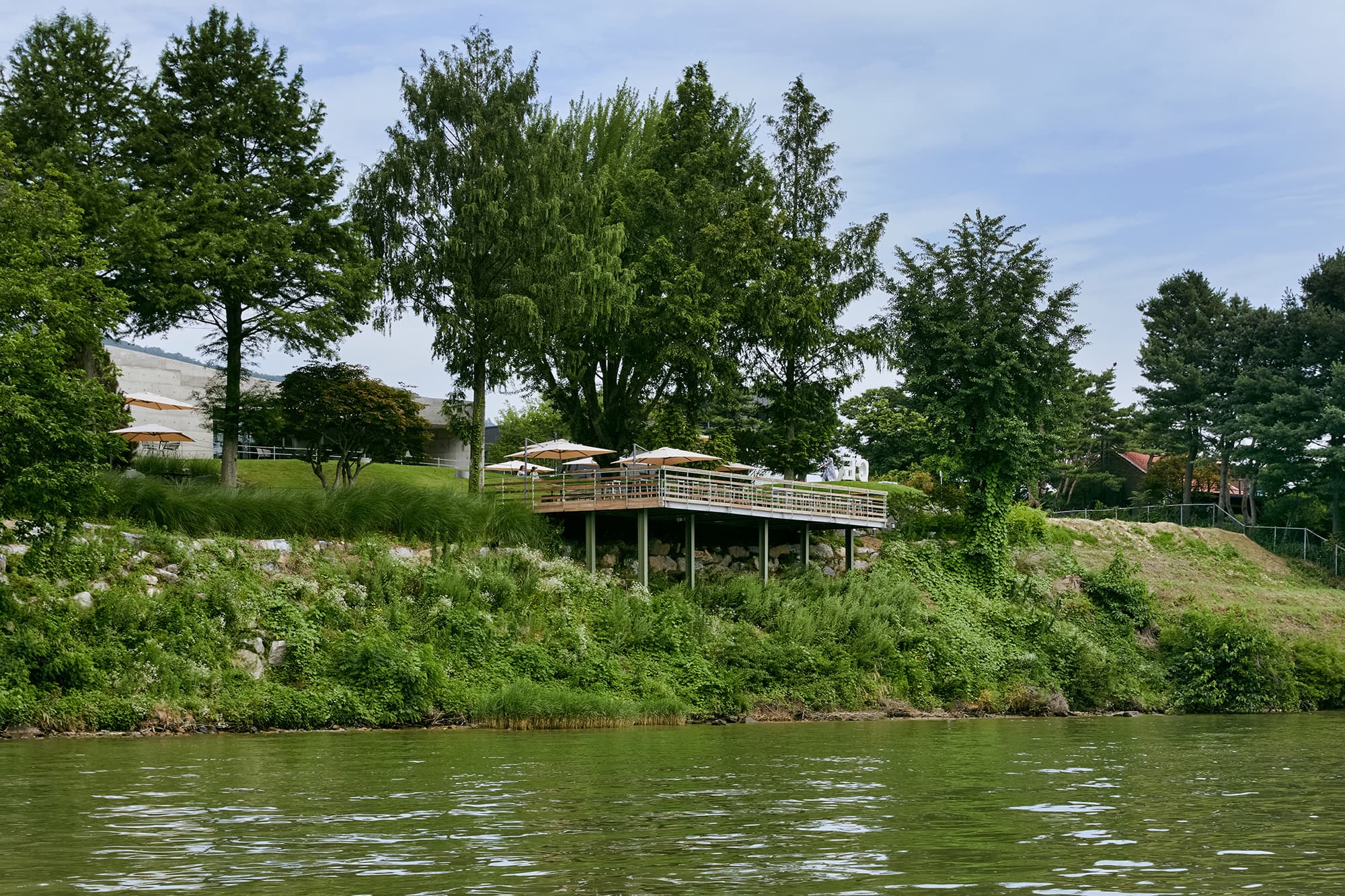Nature
“무위자연과 차경기법의 한국 정원예술을 현대적으로 재해석한 오감정원”
AYU Space 정원은 한국정원의 특징인 무위자연(無爲自然, Unassuming Naturalism)철학을 현대적 감각으로 재해석하여 내국인 뿐만 아니라 외국인에게도 그 가치를 인정받을 수 있는 디자인으로 조성되었습니다.
노자의 무위자연 철학은 '자연 그대로'를 정원에 담고자 하는 한국 조경문화의 핵심 요소였으며, 비움과 채움의 미학을 담은 소쇄원, 세연정, 백운동 정원, 서식지 정원 등에서 찾아볼 수 있습니다.
AYU Space가 위치한 북한강은 강원도 금강군에서 발원하여 수도권 시민들에게 맑고 깨끗한 물을 제공할 뿐만 아니라 빼어난 자연 풍광으로 삶의 여백을 제공하고 있습니다. 이러한 지형적 특성을 반영한 AYU Space 정원은 넘치지도, 모자라지도 않는 자연스러움을 강조하고 있습니다.
AYU Space 담장안의 모든 건물들은 잔디로 덮인 곡선 구릉, 소나무를 비롯한 거목과 초화들로 둘러싸여 건축과 자연의 조화로운 균형과 함께 그 속에서 사람들이 편안하게 쉴 수 있는 휴식처 역할을 하고 있습니다.
건물과 건물 사이 그리고 잔디밭과 북한강변으로 이어지는 화강암 왕마사의 산책길은 한국의 자연을 닮은 '곡선의 미'를 살려 우리의 소중한 추억과 상상력을 자극하며, 그 길을 밟고 걷는 동안 청각과 촉각의 감각 능력을 최대한 끌어냅니다.
산책길 주변의 갈대가 흔들리는 소리, 북한강 물이 찰랑거리는 소리와 바람소리, 그리고 새들의 울음소리는 정원에 흐르는 음악과 함께 하모니를 이루고 있습니다.
오랜 세월의 흔적을 담고 있는 강가의 메타세콰이어, 금송, 은행나무, 단풍나무, 벗나무 등의 거목과 커다란 갈대가 조화를 이루어 주변 산과 하늘, 강물과 맞닿는 차경(借景, Borrowed Scenery System)은 비로소 무위자연의 정원예술을 완성하고 있습니다.
AYU Space 정원은 크게 다섯 가지의 영역으로 나뉘어지는데, 한옥마당 정원, 소나무 정원, 단풍나무 정원, 은행나무 정원 그리고 물의 정원입니다. AYU Space 정원에서 가장 인상적인 강물로 내려가는 돌계단의 꽃과 나무들은 은은한 조명의 달빛 어린 강물과 밤하늘의 별들과 함께 어우르진 음악과 함께 시간과 공간을 초월하는 또다른 무위자연의 세계를 느끼게 합니다.
AYU Space는 한국의 문화와 미를 담아 무위자연의 본질적 특성에 충실하면서 정원기법에서 표현하기 어려운 복합적 감성 분위기를 새로운 현대적 해석으로 표현하였고, 그 결과 오랜 시간 기다려서 피어난 꽃의 격조 높은 아리따움과 간결하고 사색적인 무위자연의 겸양, 자연의 이치에 순응하는 새로운 오감 공간을 완성하였습니다.
